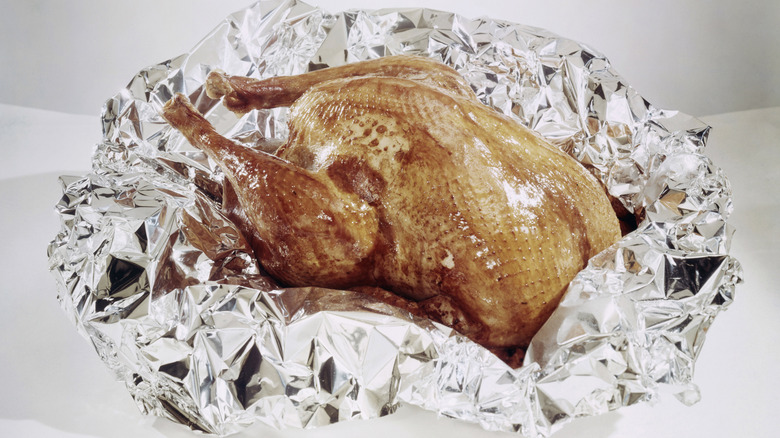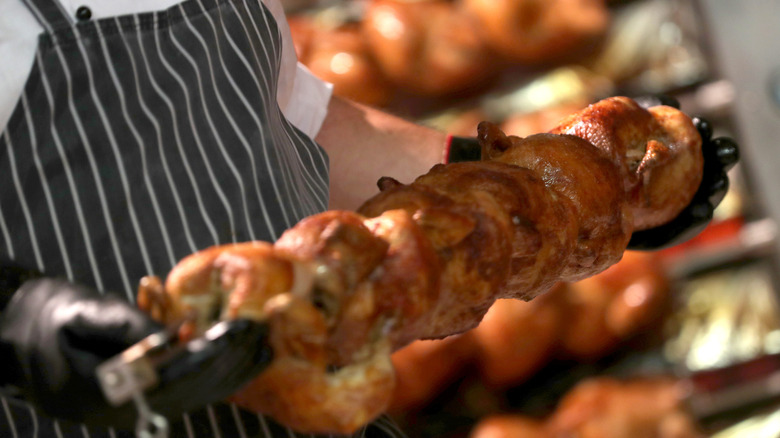You're Probably Making A Mistake When Choosing A Chicken For Roasting
Roasted chicken is one of the most modifiable food items out there and tends to be on the cheaper side compared to red meats and seafood. The plethora of different dry rubs, marinades, and vegetables it can pair with are too many to count. A fresh-out-of-the-oven lemon pepper or mushroom and garlic salt variation works wonders for crispy skin and sinks into the dark meat for a hearty host of flavors that entice you to eat more. It isn't difficult to see why roasted chicken is such a mainstay in grocery stores and home kitchens alike.
But one fundamental thing people often pay no mind to when picking up that whole chicken at the grocery store can lead to disaster — no matter what recipe or seasoning is employed to try to save it. There are plenty of mistakes made with chicken that are best avoided during the cooking process, but the most important decision happens before a single ingredient is chosen.
Size, unfortunately, matters
A value buyer's instinct tells us that the bigger, the better when it comes to flat price units of food at the grocery store. This includes whole chickens, but what no one thinks about is how size affects flavor and doneness when roasting. Too big of a chicken, and it dries up with the risk of the breast not cooking all the way through. Too small, and the family is going hungry. Not ideal for a recipe that ideally feeds 4-6 people like Ina Garten's roast chicken recipe.
Luckily, Chef Alissa Fitzgerald (via Insider), with her 15 years of experience, advocates for a four to eight-pound bird being the perfect size when it comes to maintaining flavor and breast temperature. According to Fitzgerald, the quality of the chicken itself matters as well, but so long as the size is at or in between those weights, it sets the roasted chicken off to a good start. It also prevents sacrificing moisture or losing flavor additions like a thick dry rub on the skin or your favorite marinade.

